Fall prevention
Fall prevention is a variety of actions to help reduce the number of accidental falls suffered by older people.
MORSE FALL SCALE Tools are using for assessment
Falls and fall related injuries are among the most serious and common medical problems experienced by older adults. Nearly one-third of older persons fall each year, and half of them fall more than once.[1] Over 3 million American over the age of 65 visited hospital emergency departments in 2015 due to fall related injuries with over 1.6 million being admitted.[2] Because of underlying osteoporosis and decreased mobility and reflexes, falls often result in hip fractures and other fractures, head injuries, and even death in older adults. Accidental injuries are the fifth most common cause of death in older adults.[1] In around 75% of hip fracture patients, recovery is incomplete and overall health deteriorates.[1]
The most consistently proven predictors of fall risk are history of a fall during the past year and gait and balance abnormalities.[3] Some studies (but not others) indicated that impaired vision, certain medications (especially psychotropic drugs),[4] decreased activities of daily living and impaired cognition are associated with a higher risk of falls. Furthermore, some interventions that have been shown to be effective in one country are not necessarily generalized to other populations.[5] The contribution of orthostatic hypotension to fall risk remains uncertain.[3]
Risk factors of falls
Various kinds of individuals of different ages and conditions are at a constant risk of falling.
Healthy young individuals
The most common cause of falls in healthy adults is due to accidents. It may be by slipping or tripping from stable surfaces or stairs, improper footwear, dark surroundings, uneven ground, or lack of exercise. Studies suggest that women are more prone to falling than men in all age groups.[6] The most common injuries in the young population due to falls occur at the wrist/hand, knees and ankles.
Older adults
Studies have shown that old adults above the age of 65 years are more prone to falls than young healthy adults.[7][8] The most falls in older adults are due to:[9]
- Gait Deviations - These are the main changes that occur in the gait patterns of older adults, which may contribute to the incidence of falls. There may be a 10-20% reduction in gait velocity and reduction in stride length; an increase in stance width and double support phase; and bent posture.[10][11][12] Studies show that a wider stride does not necessarily increase stability but instead seems to predict an increased likelihood of experiencing falls.[13]
- Accidents/Environmental factors – a fall may be from stable or unstable surfaces - slipping or tripping on wet surfaces or ice, from stairs or rugs, and/or due to improper footwear.
- Balance disorders – vertigo, Syncope, unsteadiness
- Visual, sensory, motor and cognitive impairment - affected reflexes
- Medications and alcohol consumption - taking medications for a long time can make one feel dizzy, confused, and slow. Alcohol consumption causes a delay in reflexes and hampers balance.
- Acute and chronic infections
- Dehydration
Stroke
High fall rates in individuals with stroke are reported. Approximately 30% fall at least once a year and 15% fall twice or more.[14] Risk factors for falls in stroke survivor’s are-.[15]
- Gait Deviations - Disturbance of gait is a common problem post stroke and a common contributor of falls, predicting continuing functional decline. Velocity, cadence, stride time, stride length, and temporal symmetry index were reduced and resulted in significant gait deterioration.[16] Reduced propulsion at push-off, decreased leg flexion during the swing phase, reduced stability during the stance phase, and reduced automaticity of walking occur.[14]
- reduced muscle tone and weakness
- side effects of drugs (hypoglycemic, antihypertensive, neuroleptic drugs)
- hypoglycemia
- hypotension
- communication disorders
- hemianopia
- visuospatial agnosia
Parkinson's disease
Most people with Parkinson’s disease (PD) fall and many experience recurrent falls.[17] A study reported that over 50% of persons with PD fell recurrently.[18] Direct and indirect causes of falls in Patients with Parkinson's disease:[19]
- Gait Deviations - Decreased gait velocity and stride length due to Hypokinetic movement, decreased cadence due to Bradykinetic movements. Increased double-limb support.[20] [17] They also exhibit Flat foot strike.
- Sudden falls - these can be sudden and unpredictable
- Freezing and festination episodes
- Postural instability
- Intensified dyskinesia
- Autonomic system disorders - orthostatic hypotension, neurocardiogenic syncope, postural orthostatic tachycardia syndrome
- Neurological and sensory disturbances - muscle weakness of lower limbs, deep sensibility impairment, epileptic seizure, cognitive impairment, visual impairment, balance impairment
- Cardiovascular disease
- Drugs - Levodopa induced dyskinesia
Multiple sclerosis
Evidence show that there is high prevalence of falls among people with multiple sclerosis (MS), with approximately 50% reporting a fall in their past 6 months.[21] About 30% of those individuals report falling multiple times.
- Gait Deviations – Gait variability is elevated in individuals with MS.[22] Stride length, Cadence, and Velocity decreased. Stance duration and cycle duration increased.[23]
- Drop foot - may cause the person to stumble on flat surfaces
- Ataxia - loss of motor skills. Vestibular ataxia results in loss of balance. Symptoms exacerbated when eyes closed and base of support reduced.
- Reduced proprioception – no sense of body position and surrounding
- Improper or reduced use of assistive devices[24]
- Vision – blurred vision, double vision, loss of peripheral vision
- Cognitive Changes – Approximately 50% experience difficulty with their cognition over the course of the disease. This affects planning, organizing, problem-solving, and one's ability to accurately perceive their environment. When these problems interfere with walking, it may result in a fall.
- Neurological medications – causes fatigue,[25] weakness, dizziness
Dementia
Studies suggest that men are twice at the risk of falling than women.[26] Common causes of falls in dementia include:
- Gait deviations - Slower walking speed, reduced cadence and step length, increased postural flexion, increased double support time[27]
- Postural instability - gait changes and impaired balance. People with balance deficits are three time more at risk of falling than those with normal gait and intact balance
- Lack of physical exercise
- Memory impairment
- Visual impairment
- Fatigue
- Medications – psychotropic drugs have effects on balance, reaction time and other sensori-motor functions, orthostatic hypotension and extra pyramidal symptoms
Strategies and interventions
Research indicates that multifactorial intervention programs can reduce the number of falls; in a meta-analysis of studies of older people in general the reduction was around 27%, and in those selected because of a previous fall or other risk factor there was a 14% reduction.[28] Although further research is needed, preventative measures with the greatest likelihood of a positive effect include strength and balance training, home risk assessment,[29] withdrawing psychotropic medication, cardiac pacing for those with carotid sinus hypersensitivity, and tai chi.[28] Resistance exercise 2 or 3 times a week with ankle weights or elastic bands has been proven in tests to rebuild loss muscle mass and reduce falls in adults of all ages. This was first tested and proven in New Zealand by the Otago Medical School in 4 controlled trials in which close to 1000 older adults, average age 84, participated. Falls among a test group that did the Otago routines 3 times a week for 12 months were 35% less than a control group that did not use the routines.[30] Two similar 12-month tests were conducted in the US using residents of assisted and skilled nursing facilities with one group showing a 54% reduction in falls.[31] After the age of 50, adults experience a decrease in muscle mass, a condition known as sarcopenia, by approximately 2% every year.[32] A systematic review concluded that resistance training can slow down the rate of loss in muscle mass and strength. It has been recommended that older adults participate in resistance training 2-3 times a week to weaken the effects of sarcopenia.[32] Assistive technology can also be applied, although it is mostly reactive in case of a fall.[5] Exercise as a single intervention has been shown to prevent falls in community dwelling older adults. A systematic review suggests that having an exercise regimen that includes challenging balance workouts for three or more hours per week results in a lesser chance of falling.[32] Resistance training has been shown to be beneficial beyond fall prevention, as it also helps improve functional mobility and activities of daily living such as walking endurance, gait speed, and stair climbing.[32] Research explains that this significant increase in performance can be accomplished after the age of 90. In order for older adults to gain confidence in resistance training, which may ultimately lead to fall prevention effects, they need to obtain the recommended amount of daily activity.[32]
The aim of medical management is to identify factors that can contribute to falls and fracture risk such as osteoporosis, multiple medications, balance and gait problems, loss of vision and a history of falls. Beers Criteria is a list of medications that are potentially inappropriate for use in the elderly and some of them increase the risk of falls.[33]
Assessment of every fall should be aimed at identifying the inciting cause so that it can be avoided in future. If the fall is clearly without loss of consciousness, a "Timed Get up and Go" or "TUG" test should be performed to assess the mobility and a thorough examination of musculoskeletal system should be performed to identify any contributory factors.
Falls are well known amongst community – dwelling individuals ages 65 and older.[34] The risk of fall-related incidents nearly doubles when individuals are institutionalized.[35] The impact on different falls in certain situation of fall prevention programs on the rate differences of falls in elderly population has not been reported. According to the study, annual 60% of older people with cognitive impairment and dementia are highly likely risk of having a fall related incident .Most falls that are experienced are by older people over the age 65 with acute problems that can come from chronic diseases. These falls may occur by intrinsic risk factor as well as precipitating causes. In order to prevent falls that could lead to serious injury or death health facilities need to know how to solve the problems and explore alternatives that can lead to a patient fall. As well as cognitive impairment, functional impairment, gait and balance disorders, certain medications can all increase fall risk factors for patients. By advance age these risk factors are double and more likely to occur. It’s important to identify the risk factors that increase the likelihood of injurious falls. State-level fall prevention strategies can also mitigate fall risk for community-dwelling older adults.[34]
Environmental modification
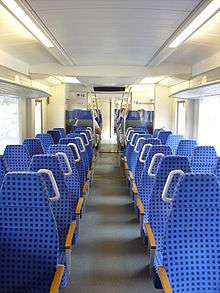
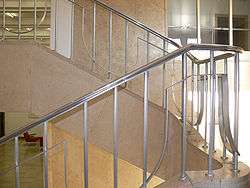
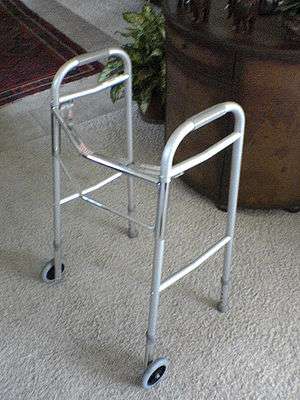
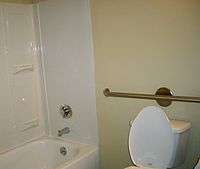
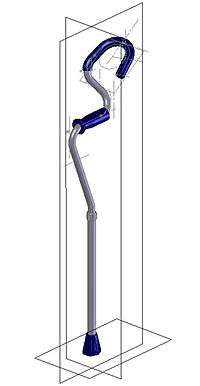
The home environment can present many hazards. Common places for injurious falls are the bathtub and steps. Changes to the home environment are aimed at reducing hazards and help support a person in daily activities. Changes could include minimizing clutter, installing grab bars in the shower or tub or near the toilet, and installing non-slip decals to slippery surfaces.[36] Stairs can be improved by providing handrails on both sides, improving lighting, and adding colour contrast between steps. Improvement in lighting and luminance levels can aid elderly people in assessing and negotiating hazards. Currently, there is insufficient scientific evidence to ensure the effectiveness of modification of the home environment to reduce injuries.[37] It appears that changes to the environment are not easily implemented because of low uptake by study participants.[37] Nevertheless, evidence suggests that pre-discharge home assessments are associated with a reduced risk of falling.[29]
Safety technology
Important improvements to prevent falls at home or indeed, anywhere, include provision of handrails and grab bars, which should be easy to grip or grasp and should be near any stairs, or change in floor level. Floors should always be flat and level, with no exposed corners or edges to trip the unwary. Patterned floors can be dangerous if they create misleading or distorted images of the floor surface, so should be avoided.
There are special handles and closed handgrips available in bathrooms and lavatories to assist users when bending down or over, for example. Extra support for users when moving include walking sticks, crutches and support frames, such as the Zimmer frame. Flexible handles such as hanging straps can also be useful supports.
Lighting
An important area of ergonomics concerns lighting, so that the user can see easily any possible fall hazards (such as steps or obstacles), and so avoid them. Lamps and lighting, for example, should be of great intensity or power (or illuminance) so that dangers are clearly illuminated and can be seen by users. They should also react quickly when switched on, so many CFLs are or should be excluded. Incandescent bulbs normally offer extremely fast reaction times as well as high intensity illumination, while CFLs take time to warm up to maximum illuminance. It is especially vital for older people who may be suffering from macular degeneration or cataracts leading to poor eyesight. The stability of the user is essential for stable movement, and his or her balance can be improved by, for example, high friction floors to prevent slippage. Footwear such as shoes should also have high friction natural rubber or synthetic rubber soles, preferably serrated so as to give extra grip.
Eyeglasses selection and usage
Bi-focal spectacles and tri-focal eyeglasses are commonly ground to provide refractory correction ideal for reading, that is, 12 to 24 inches (30 to 60 cm), when the wearer is looking downward through them. These glasses, used for reading, are therefore not ideal for safe walking, where correction for 4½ to 5 feet (137 to 152 cm) would be far more appropriate. Some countries with universal health care recommend separate reading and walking glasses, a rather rare practice in the U.S. in the early 21st Century.
Occupational and physical therapy
Studies show that balance, flexibility, and strength training not only improve mobility but also reduce the risk of falling. This may be achieved through group and home-based exercise programs.[38] The majority of older adults do not exercise regularly and 35% of people over the age of 65 do not participate in any leisurely physical activities.
Older adults
In older adults, physical training and perturbation therapy is directed to improving balance recovery responses and preventing falls. Gait related changes in elderly provide greater chance of stability during walking due to slow speed and greater base of support, but they also increase the chance of slipping or tripping and falling.[39] Appropriate joint moment generation is required to create sufficient push-off for balance recovery. Age-related changes in muscles, tendons, and neural structures may contribute to slower reactive responses. Interventions involving resistance training along with perturbation training may prove to be beneficial in improving muscle strength and balance recovery.
Stroke recovery
No exercise intervention has proved to be effective in reducing risk of falls among individuals with stroke.[40]
Long term care facilities and hospitals
Vitamin D supplementation reduces the rates of falls among people in longterm care facilities.[41]
Although multifactorial interventions and exercise interventions in care facilities seem to be beneficial ; more robust evidence is needed to support them.[41]
Exercise interventions in subacute hospital settings reduce falls in older adults , and so do multifactorial interventions in hospitals.[41]
See also
- Falling (accident)
- Falls in older adults
- Light ergonomics
- Lighting for the elderly
- Safety engineering
- Safety equipment
- Walker (mobility)
- Home Modifications
- Home automation for the elderly and disabled
- Assisted living
- Assistive technology
References
- Moylan KC, Binder EF (June 2007). "Falls in older adults: risk assessment, management and prevention". The American Journal of Medicine. 120 (6): 493.e1–6. doi:10.1016/j.amjmed.2006.07.022. PMID 17524747.
- Disease Control, Centers for. "Non-fatal injury report". WISQARS database. US Government. Retrieved 2 December 2017.
- Ganz DA, Bao Y, Shekelle PG, Rubenstein LZ (January 2007). "Will my patient fall?". JAMA. 297 (1): 77–86. doi:10.1001/jama.297.1.77. PMID 17200478.
- Hartikainen S, Lönnroos E, Louhivuori K (October 2007). "Medication as a risk factor for falls: critical systematic review". The Journals of Gerontology. Series A, Biological Sciences and Medical Sciences. 62 (10): 1172–81. doi:10.1093/gerona/62.10.1172. PMID 17921433.
- Hill KD, Suttanon P, Lin SI, Tsang WW, Ashari A, Hamid TA, Farrier K, Burton E (January 2018). "What works in falls prevention in Asia: a systematic review and meta-analysis of randomized controlled trials". BMC Geriatrics. 18 (1): 3. doi:10.1186/s12877-017-0683-1. PMC 5756346. PMID 29304749.
- Talbot, L. A., Musiol, R. J., Witham, E. K., & Metter, E. J. (2005). Falls in young, middle-aged and older community dwelling adults: perceived cause, environmental factors and injury. BMC Public Health, 5(1), 86.
- Gillespie, L. D. (2013). Preventing falls in older people: the story of a Cochrane review. Cochrane Database of Systematic Reviews, 3, ED000053-ED000053.
- Yoshikawa, T. T., Cobbs, E. L., & Brummel-Smith, K. (1993). Ambulatory geriatric care. Mosby Inc.
- O'Loughlin, J. L., Robitaille, Y., Boivin, J. F., & Suissa, S. (1993). Incidence of and risk factors for falls and injurious falls among the community-dwelling elderly. American journal of epidemiology, 137(3), 342-354.
- Winter DA, Patla AE, Frank JS, Walt SE. Biomechanical walking pattern changes in the fit and healthy elderly. Phys Ther. 1990;70(6):340–347.
- Elble RJ, Thomas SS, Higgins C, Colliver J. Stride-dependent changes in gait of older people. J Neurol. 1991;238(1):1–5 .
- Snijders AH, van de Warrenburg BP, Giladi N, Bloem BR. Neurological gait disorders in elderly people: clinical approach and classification. Lancet Neurol. 2007;6(1):63–74.
- Maki, B. E. (1997). Gait changes in older adults: predictors of falls or indicators of fear?. Journal of the American geriatrics society, 45(3), 313-320
- Vivian Weerdesteyn PhD, P. T., de Niet MSc, M., van Duijnhoven MSc, H. J., & Geurts, A. C. (2008). Falls in individuals with stroke. Journal of rehabilitation research and development, 45(8), 1195.
- Tsur, A., & Segal, Z. (2010). Falls in stroke patients: risk factors and risk management. IMAJ-Israel Medical Association Journal, 12(4),216
- Yang, Y. R., Chen, Y. C., Lee, C. S., Cheng, S. J., & Wang, R. Y. (2007). Dual-task-related gait changes in individuals with stroke. Gait & posture, 25(2), 185-190.
- Allen, N. E., Schwarzel, A. K., & Canning, C. G. (2013). Recurrent falls in Parkinson’s disease: a systematic review. Parkinson’s Disease, 2013.
- Wood, B. H., Bilclough, J. A., Bowron, A., & Walker, R. W. (2002). Incidence and prediction of falls in Parkinson's disease: a prospective multidisciplinary study. Journal of Neurology, Neurosurgery & Psychiatry, 72(6), 721-725.
- C.W. Olanow, R.L. Watts, W.C. Koller An algorithm for the management of Parkinson's disease: treatment guidelines Neurology, 56 (11 Suppl 5) (2001), pp. S1–S88
- McNeely, M. E., Duncan, R. P., & Earhart, G. M. (2012). Medication improves balance and complex gait performance in Parkinson disease. Gait & posture, 36(1), 144-148.
- Finlayson, M. L., Peterson, E. W., & Cho, C. C. (2006). Risk factors for falling among people aged 45 to 90 years with multiple sclerosis. Archives of Physical Medicine and Rehabilitation, 87(9), 1274-1279.
- Socie, M. J., & Sosnoff, J. J. (2013). Gait variability and multiple sclerosis. Multiple sclerosis international, 2013.
- Severini, G., Manca, M., Ferraresi, G., Caniatti, L. M., Cosma, M., Baldasso, F., ... & Basaglia, N. (2017). Evaluation of Clinical Gait Analysis parameters in patients affected by Multiple Sclerosis: Analysis of kinematics. Clinical Biomechanics.
- D. Cattaneo, C. De Nuzzo, T. Fascia, M. Macalli, I. Pisoni, R. Cardini Risks of falls in subjects with multiple sclerosis Arch Phys Med Rehabil, 83 (2002), pp. 864–867
- L.B. Krupp, C. Christodoulou Fatigue in multiple sclerosis Curr Neurol Neurosci Rep, 1 (2001), pp. 294–298
- van Dijk, P. T., Meulenberg, O. G., Van de Sande, H. J., & Habbema, J. D. F. (1993). Falls in dementia patients. The Gerontologist, 33(2), 200-204.
- Shaw, F. E. (2003). Falls in older people with dementia. Geriatr aging, 6(7), 37-40.
- Gillespie LD, Gillespie WJ, Robertson MC, Lamb SE, Cumming RG, Rowe BH (2003). "Interventions for preventing falls in elderly people". The Cochrane Database of Systematic Reviews. 4 (4): CD000340. doi:10.1002/14651858.cd000340. PMID 14583918. (Retracted, see doi:10.1002/14651858.cd000340.pub2. If this is an intentional citation to a retracted paper, please replace
{{Retracted}}with{{Retracted|intentional=yes}}.) - Lockwood KJ, Taylor NF, Harding KE (April 2015). "Pre-discharge home assessment visits in assisting patients' return to community living: A systematic review and meta-analysis". Journal of Rehabilitation Medicine. 47 (4): 289–99. doi:10.2340/16501977-1942. PMID 25782842.
- Program O. "Otago Balance Retraining Program" (PDF). Otago Medical School. Otago Medical School. Retrieved 2 December 2017.
- SimplyFit O. "Upgraded Restorative Program". iadvanceseniorcare. Long Term Living magazine. Retrieved 2 December 2017.
- Papa EV, Dong X, Hassan M (2017-06-13). "Resistance training for activity limitations in older adults with skeletal muscle function deficits: a systematic review". Clinical Interventions in Aging. 12: 955–961. doi:10.2147/CIA.S104674. PMC 5479297. PMID 28670114.
- "Quality Matters (Updated Beers Criteria 2003)". 2007-11-20. Archived from the original on 2007-11-20. Retrieved 2018-02-27.
- National Safety Council (2017). The State of Safety - A State-by-State Report. Itasca, IL. pg.29. Accessed at: http://www.nsc.org/NSCDocuments_Advocacy/State-of-Safety/State-Report.pdf Archived 2017-07-28 at the Wayback Machine
- Plum F, Posner JB (Nov–Dec 2015). "The diagnosis of stupor and coma". Contemporary Neurology Series. 10 (6): 1130–1138. doi:10.1590/0104-1169.0285.2658. PMC 4664014. PMID 26626005.
- Lin JT, Lane JM (January 2008). "Nonpharmacologic management of osteoporosis to minimize fracture risk". Nature Clinical Practice Rheumatology. 4 (1): 20–5. doi:10.1038/ncprheum0702. PMID 18172445.
- Lyons RA, John A, Brophy S, et al. Modification of the home environment for the reduction of injuries. Cochrane Database Syst Rev. 2006;(4):CD003600. Full text
- Gillespie LD, Robertson MC, Gillespie WJ, Sherrington C, Gates S, Clemson LM, Lamb SE (September 2012). "Interventions for preventing falls in older people living in the community". The Cochrane Database of Systematic Reviews. 9 (9): CD007146. doi:10.1002/14651858.CD007146.pub3. PMID 22972103.
- Pijnappels M, Reeves ND, Maganaris CN, van Dieën JH (April 2008). "Tripping without falling; lower limb strength, a limitation for balance recovery and a target for training in the elderly". Journal of Electromyography and Kinesiology. 18 (2): 188–96. doi:10.1016/j.jelekin.2007.06.004. PMID 17761436.
- Batchelor F, Hill K, Mackintosh S, Said C (August 2010). "What works in falls prevention after stroke?: a systematic review and meta-analysis". Stroke. 41 (8): 1715–22. doi:10.1161/strokeaha.109.570390. PMID 20616328.
- Cameron, Ian D.; Gillespie, Lesley D.; Robertson, M. Clare; Murray, Geoff R.; Hill, Keith D.; Cumming, Robert G.; Kerse, Ngaire (2012-12-12). "Interventions for preventing falls in older people in care facilities and hospitals" (PDF). The Cochrane Database of Systematic Reviews. 12: CD005465. doi:10.1002/14651858.CD005465.pub3. ISSN 1469-493X. PMID 23235623.
Sources
- Lord, Stephen R., et al. Falls in Older People: Risk Factors and Strategies for Prevention
External links
- Fall prevention NHS Choices
- Fall prevention for older adults US Centers for Disease Control and Prevention
- Fall Prevention in the Workplace US Centers for Disease Control and Prevention, National Institute for Occupational Safety and Health